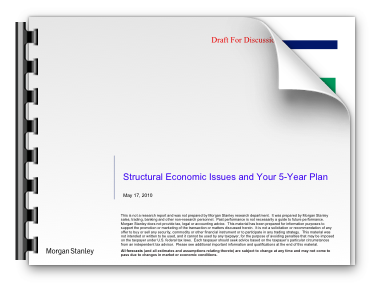“Remainers who wish to reverse the vote should go live in a banana republic, where reversing undesired vote outcomes is de rigueur.”
- Tweet from Deon Opperman; @deonopperman6
“Radiohead crowd left red-faced after applauding three minute guitar tuning, mistaking it for new song..
Tens of thousands of Radiohead fans embarrassed themselves at Glastonbury festival this evening after mistaking the band tuning their guitars for new material.
Many tweets were sent from members of the crowd during the incident, some claiming it to be the band’s best work since OK Computer. One fan described it as ‘minimalist, but also complex, emotionally raw, but still able to push the boundaries of what music can do.’”
- Story from the BBC News website.
There are a number of things you don’t want to hear a central banker say. One of those things just popped out of Janet Yellen’s mouth – “I don’t believe we will see another financial crisis in our lifetime.” That has to be up there with Irving Fisher’s deathless observation from 17 October 1929 that
Stock prices have reached what looks like a permanently high plateau
or John Maynard Keynes’ comparably adept forecast from 1927 that
We will not have any more crashes in our time.
So far, so anecdotal. How about some data to back up the thesis that, as Thorstein Polleit puts it, the Super Bubble is in Trouble ?
First, define your Super Bubble. We can do this in two ways. One relates to longevity (how long has the bull run lasted ?), the other to valuation (how expensive is the market now ?). The global bond bull began back in 1981, when 30 year US Treasury yields peaked at 15.2%. Now, over 35 years later, long bond yields are below 3%.
Polleit expresses it a little differently, citing the p/e ratio of bonds so that they might more fairly be compared to stocks. To calculate the p/e ratio of a government bond, he divides 1 by the 10 year government bond yield. His results are shown below.

Source: Thomson Financial / Thorstein Polleit
¹For bonds, calculated as 1 divided by the 10 year government bond yield
In his words,
You do not need to be a financial market wizard to see that especially bond markets have reached bubble territory: bond prices have become artificially inflated by central banks’ unprecedented monetary policies. For instance, the price-earnings-ratio for the US 10-year Treasury yield stands around 44, while the equivalent for the euro zone trades at 85. In other words, the investor has to wait 44 years (and 85 years, respectively) to recover the bonds’ purchasing price through coupon payments.
Meanwhile, however, the US Federal Reserve (Fed) keeps bringing up its borrowing rate; and even the European Central Bank (ECB) is now toying with the idea of putting an end to its expansionary policy sooner rather or later.
Those of us who are hostile to central planning are doubly hostile to governmental interference in the price mechanism, which is what the misguided policies of QE and ZIRP effectively are. The definitive text on this topic is Forty Centuries of Wage and Price Controls. Spoiler alert: government attempts to rig prices always fail, sometimes catastrophically.
The problem facing the likes of Janet Yellen, Mark Carney [makes sign of the cross and looks urgently for garlic] and Mario Draghi is that, having now weaponized short term lending rates, the nukes can’t be put back in their silos. How can interest rates be raised meaningfully above zero without crashing the financial system ? Perhaps they can’t. Perhaps unelected monetary bureaucrats should never have been allowed to take them there in the first place. But we are where we are. Any commentary surrounding monetary policy can now only echo that tired old joke about the lost traveller who, when seeking advice, is told that he shouldn’t start from here.
But investors have to start from here. If the problem is that almost all financial assets are either in, or close to, bubble territory, then the pragmatic solution has to be: don’t buy them then !
Morgan Housel has written a superb piece that explains bubbles in an objective and nuanced way, and we can’t recommend it highly enough. As he says,
No matter what kind of investor you are, the key to success is not participating in a game other than the one you intended to play. And you can only do that if you make an effort to identify what games the people surrounding you are playing, separating them from your own. It is the only way I know of to have a reasonable shot at not getting sucked into bubbles in the first place.
If bonds are in the terminal stage of a bubble – and we think they are – then don’t own them. This isn’t rocket surgery. If most stock markets seem to be in a similar state of untenable valuation, then don’t own them either. Instead, favour genuine asset class diversity (we would suggest the triumvirate of value stocks, systematic trend-following funds, and the monetary metals, gold and silver) – and don’t consciously overpay for anything.
Benjamin Graham called it “margin of safety”. We call it plain common sense.
Janet Yellen just sounded the hubris klaxon. Was anybody listening ?



